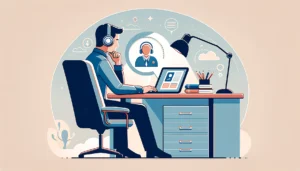Insights from Matthew Syed and Jaguar Land Rover on the learning leader
- 4 Min Read
The importance of adopting the right mindset is a critical success factor for leaders. That was the message at a recent event in Central London hosted by Hive Learning. The event brought together two of the most influential thinkers on the Art of Leadership, as well as hearing from two industry leaders on how they […]
- Author: Rachel Montgomery-Young
- Date published: Nov 1, 2017
- Categories

The importance of adopting the right mindset is a critical success factor for leaders. That was the message at a recent event in Central London hosted by Hive Learning. The event brought together two of the most influential thinkers on the Art of Leadership, as well as hearing from two industry leaders on how they foster the right culture in their organisations.
Angus McCarey, founder and chief executive of Hive Learning, was the host for the Mindset and Methods of Learning Leaders event at exclusive Ham Yard in London.
Fixed and variable
McCarey invited Matthew Syed, former British number one table tennis player and the author of Black Box Thinking and Bounce to talk about the mindset of the leader. It was clear that Syed believed that by adopting certain psychological approaches leaders can not only inspire those around them, but also educate themselves in the process.
In Syed’s view, there are two types of mindset in most leaders; “The first is, to be really good at a job, people rely on talent, gift or inherent disposition towards being good at their chosen field. To succeed in business you need to hire these talented people.” This can be described, Syed suggested, as a ‘fixed’ mindset.
On the other hand, he continued, there are those who believe that success comes from a more ‘growth-oriented’ mindset which focuses more on gaps in skill and knowledge and seeks to learn and grow. “It is these people that have the most to give from the leader’s office: the humility to know where their knowledge ends, and the determination to constantly improve,” he told delegates.
Fostering this growth mindset can deliver real impact. Certainly, from an HR Director’s perspective, anything that can support staff development to help employees fulfil their true potential must be embraced..
Unforced errors
Syed contrasted the different approaches between two industries that personify the differences: “On one hand, the aviation industry uses failure as an opportunity to learn and build on its already impressive safety record; engineers accept they can always improve.
“Meanwhile the healthcare system allows human error to go on unchecked, thanks in large part to a fixed culture of expertise and knowledge built up over time: clinicians believe they alone have sufficient knowledge to address a problem, and any bad outcomes cannot be predicted.”
Any organisational system, Syed said, that assumes that leaders are the fount of all knowledge with nothing to learn, will soon struggle to keep pace with competitors that prioritise learning and development among its senior people. Clearly, fostering a collaborative work environment makes a big difference.
Shaking it up
For Kirsty Pitcher, HR Director, Talent & Executive Development at Jaguar Land Rover, embedding a culture of continuous improvement hinged on the adoption of a new leadership framework that stresses personal growth and development. “We used to run a very traditional leadership programme where the content was fixed, the same from year to year. And actually they weren’t getting the job done,” she said.
Pitcher’s teams were disengaged from these programmes and not learning and improving, so she decided to scrap it and went back to basics: “We now want to develop three core competencies: grow the business, know and grow your team and then know and grow yourself. So as a leader you should constantly want to learn.”
“I was looking for something that would allow our leaders to learn in an agile way, something that could be updated and changed regularly,” she said, recalling the doorstep size of the previous learning bible.
“Now we put all of this on the Hive Learning app so people can see it wherever they are, and that’s a great benefit.”
Learning together
Part of Pitcher’s breakthrough at JLR has been the start of the concept of peer to-peer learning, where lessons are captured and shared across the company’s leaders. “It’s a great way of discouraging the know it all mentality, and instead embed the idea of ‘learn it all’.
Wrapping up, McCarey pointed out that fostering a culture where learning and leadership go hand in hand is vital to success: “Leadership creates the environment and resources for learning to take place; meanwhile learning is completely indispensable since it is the outcomes of learning that create the results that leaders are striving for.”
In short, leaders must prioritise learning. In doing that, they are better placed to learn the lessons to make themselves –and their teams – better leaders.









